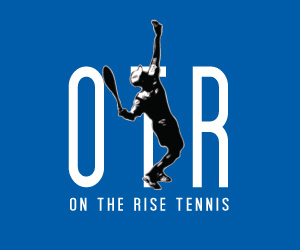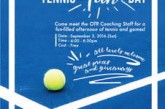
If you have spent any time watching good, quality tennis, you will notice that players tend to hit more cross-court, rather than down-the-line balls. Why do they do this when it’s so obvious to their opponents? Sitting on the sofa we want to yell at them to mix up their game, throw their opponents off balance and squeeze that ball into that apparently big, open space down the line. They are stubborn.
Or are they smart?
Usually, in a match, we remember the fantastic winners we hit and of course we remember the missed opportunities, but in most cases – from my experience with young competitors and ladies – they are often unaware of the ‘free’ points that tally up during the match because of silly errors. This may come as a surprise but during a match we will spend only 20% at most in an attacking position; 40% in a neutral position, and the remaining 40% in a defensive position. As we become better, these figures may change but let’s work with these figures first and focus on the defensive aspect of the game.
How do you know when you are defending?
A simple way to determine whether you are in a defensive position is to look at the position of your feet in relation to the baseline as you make contact with the ball, and the height of the ball in relation to the net as you make contact. If you are positioned behind the baseline and the ball is above net height, you are definitely in a defensive position. Of course the ball could be low and you could still be defending or the ball could be short and you’re out of position and thus defending again. However, stick to that simple rule first – my feet are behind the baseline and the ball is higher than net height: I’m defending! That down-the-line shot is open but it’s just not a percentage shot and I’m going to give you three reasons why you want to play that defensive ball cross-court rather than down-the-line.
- The cross-court shot provides more space to hit into and it’s a longer distance thereby being safer, as well as giving you more time to recover if your opponent chooses to attack on his or her next shot.
- This may seem marginal, but it does make a big difference – the net is lowest in the middle of the court and therefore gives you more chance of making that ball back into play.
- Lastly, probably the most important reason – if you hit down-the-line you need to recover past the centre mark in order to be in the best position to receive your next shot. If you hit down the middle of the court, you recover to the middle. Therefore, if you hit cross-court, you only recover inside the centre mark on the side you have struck the ball from. Basically, by going cross-court you have less recovery to make. So, you can see now that the pros are hitting those repetitive cross-court shots to each other for a reason!

Watch Rafa next time he plays and notice how he only goes down-the-line when he has time on his side. It’s simple, smart, patient and highly effective tennis. Try it out next time you play and see what happens. If you come across an opponent who keeps hitting winners down-the-line from behind the baseline – blame me or blame it on luck. Impatient, risky tennis just doesn’t work in the long run!






